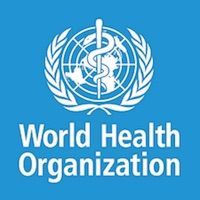Article
WHO Announces Updated Cryptococcal Meningitis Guidelines
Author(s):
Implementation of the new guidelines will improve diagnosis, prevention, and treatment of one of the most common opportunistic infections among people with advanced HIV.

At the Conference on Retroviruses and Opportunistic Infections (CROI) held in Boston, Massachusetts, the World Health Organization (WHO) launched new guidelines on cryptococcal meningitis, a key cause of mortality among the population living with advanced HIV infection.
The guidelines will help to provide updated and evidence-informed recommendations to improve diagnosis, prevention and treatment of one of the most common opportunistic infections in adults, adolescents and children with HIV, focusing on settings with limited resources and a high burden of cryptococcal meningitis, potentially reducing the rate of HIV-related mortality.
“We need to find better ways to identify and manage HIV disease, in order to achieve the global target to reduce HIV deaths by 50% by 2020,” the guidelines state.
Cryptococcal meningitis accounts for an estimated 15% of all AIDS-related deaths globally, 3 quarters of which are in sub-Saharan Africa. An estimated 223,100 cases of cryptococcal meningitis resulted in 181,000 deaths among people living with HIV in 2014.
Mortality from the infection remains highest in low-income countries, where the estimated 1-year mortality of people living with HIV who receive care for cryptococcal meningitis is 70% compared to 20—30% for high-income countries.
A major reason for the high mortality is due to a delay in diagnosis, mainly as a result of limited access to lumbar puncture and rapid diagnostic assays.
Another contributing factor to mortality is the limited ability in low-income countries to monitor and manage treatment-limiting toxicities and frequent complications of raised intracranial pressure and immune reconstitution inflammatory syndrome.
The newly released guidelines provide recommendations and good practice guidance in the following areas:
- optimally diagnosing cryptococcal meningitis
- preventing cryptococcal meningitis by screening those with advanced HIV through a cryptococcal antigen test, and treat those who test positive with fluconazole
- preventing, monitoring and managing complications from treatment including antifungal drug toxicity
- find shorter, safer and more effective antifungal drug regimens to treat cryptococcal meningitis with a 1-week combination antifungal regimen of amphotericin B and flucytosine for the induction phase of treatment — the 1-week regimen has been shown to reduce mortality by 38% and reduces the risk of anemia by 69% when compared to the previous regimen
- warnings against using systemic corticosteroids routinely
- ideal time to begin antiretroviral therapy (ART) in those with cryptococcal meningitis
According to the guidelines, advanced HIV disease remains a significant challenge. Despite major progress in expanding access to ART and reducing HIV-related deaths, many continue to die from HIV-related opportunistic infections.
WHO first published a rapid advice document for the diagnosis, prevention and management of cryptococcal meningitis in December 2011, and since then, several advances provide opportunities for improving the prevention, diagnosis and management of the infection in low- and middle-income countries.
The updated guidelines will be incorporated into the next full update of WHO consolidated antiretroviral guidelines planned for 2019. WHO plans on rapidly disseminating, adapting and implementing the new recommendations, with an evaluation process conducted in 2020 to assess the uptake of the recommendations in national guidelines.
Click here to sign up for more MD Magazine content and updates.
Related Coverage >>>
MSM Found to Underestimate Risk of HIV Infection
Prioritizing HIV Transmission Clusters May Reduce Further Infections
Risk of Acquiring HIV Increases During and After Pregnancy, Research Suggests




